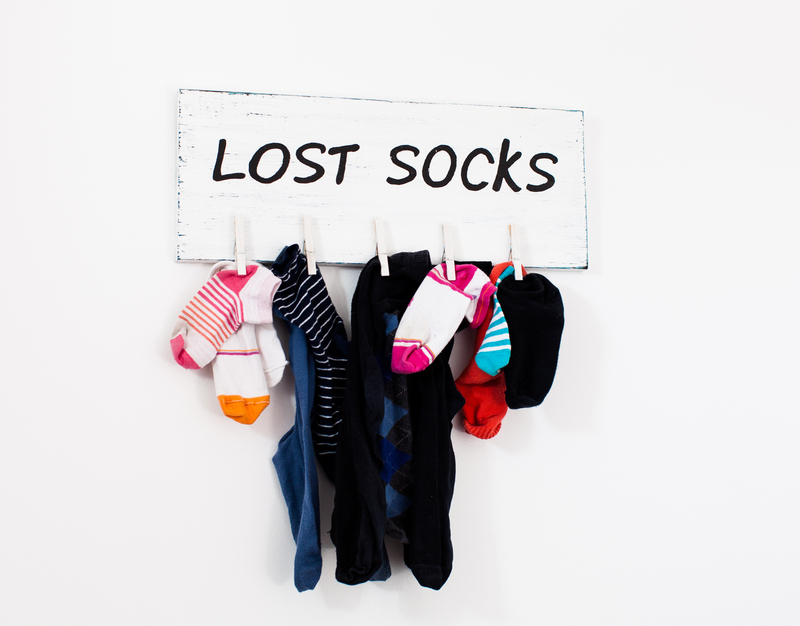Sparkling Secrets: Top Jewellery Cleaning Methods
Posted on 02/07/2025
Sparkling Secrets: Top Jewellery Cleaning Methods
Jewellery is treasured not just for its material value but also for the memories and emotions it represents. Whether it's a sparkling diamond engagement ring, an elegant gold necklace, or a vintage silver bracelet, jewellery deserves regular care to maintain its luster and brilliance. In today's guide, we unveil the sparkling secrets behind the top jewellery cleaning methods--ensuring your beloved pieces continue to shine as brightly as the day you acquired them.

Why Regular Jewellery Cleaning Matters
Dust, sweat, and exposure to cosmetics or household chemicals can dull the appearance of even the most exquisite jewellery. Without routine cleaning, cherished pieces may begin to lose their radiant sparkle. Professional jewellers recommend cleaning your jewellery regularly to:
- Restore shine and brilliance
- Remove grime, dirt, and oils
- Prevent tarnish and corrosion
- Prolong the life of your jewellery
- Safeguard gemstones and delicate metals
Uncover the top jewellery cleaning techniques below and select the method that best suits your collection.
Understanding Your Jewellery: Materials Matter
Before diving into specific jewellery cleaning methods, it's vital to recognize the material of your piece. Not all precious metals or gemstones respond identically to cleaning agents and processes. Common materials include:
- Gold - Yellow, white, or rose gold alloys
- Silver - Sterling or fine silver items
- Platinum
- Diamonds and Gemstones - Such as rubies, emeralds, sapphires, and opals
- Pearls and other organic gems (amber, coral)
Check for special settings, coatings, or antique finishes before proceeding. When in doubt, consult an expert jeweller for best cleaning practices.
Top Jewellery Cleaning Methods
1. Gentle Soap and Water: The Universal Solution
One of the simplest and most effective jewellery cleaning methods is a gentle soap and water solution. This approach works well for most types of gold, platinum, and hard gemstones.
- Mix a few drops of mild, non-detergent soap (such as baby shampoo) with warm water in a bowl.
- Soak your jewellery for 15-20 minutes to loosen debris and oils.
- Brush gently with a soft-bristled toothbrush, paying attention to crevices and underneath stones.
- Rinse thoroughly under lukewarm running water.
- Pat dry with a soft, lint-free cloth to restore shine.
Note: Avoid soaking delicate gemstones or pearls; use a soft cloth dampened with soapy water instead.
2. Baking Soda and Vinegar: For Tarnished Silver
Silver jewellery often tarnishes due to exposure to air and moisture. If your pieces have lost their shine, you can restore them with a natural cleaning method:
- Line a bowl with aluminum foil, shiny side up.
- Place your silver pieces inside.
- Sprinkle baking soda generously over the jewellery.
- Pour white vinegar slowly over the baking soda. The mixture will bubble and fizz, lifting the tarnish away.
- Let sit for 2-3 minutes before rinsing in cold water and drying with a soft cloth.
This method is one of the top silver cleaning techniques for at-home use, but it's best for unadorned silver rather than pieces with delicate pearls or glued-in gems.
3. Commercial Jewellery Cleaners: Pros and Cons
Many jewellery stores offer commercially formulated cleaning solutions tailored for various metals and gemstones. These products are designed to be safe and effective, but should be selected carefully:
- Always read labels. Choose cleaners intended for your specific type of jewellery.
- Spot test. Try a small, inconspicuous area first.
- Avoid harsh ingredients. Steer clear of products containing chlorine, ammonia, or abrasives for soft stones and delicate finishes.
Commercial cleaners can provide professional-level results when used as directed, but natural and gentle cleaning methods are often preferable for frequent maintenance.
4. Ultrasonic Cleaners: Professional Tools at Home
Ultrasonic cleaning machines are a popular tool for keeping jewellery pieces spotless. Using high-frequency sound waves, these devices create tiny bubbles that dislodge dirt and grime from intricate settings.
- Add the recommended cleaning solution and water to the device's tank.
- Place your jewellery inside the basket, ensuring they don't touch each other.
- Run the cleaner according to the manufacturer's instructions (usually 3-5 minutes).
- Rinse and dry thoroughly.
Warning: Ultrasonic cleaners are not suitable for all jewellery--you should avoid using them with pearls, opals, emeralds, or antique items, as they may damage the stones or loosen their settings.
5. DIY Toothpaste Cleaning: Quick Fix or Myth?
Some suggest using toothpaste as a convenient at-home jewellery cleaner. While toothpaste is mildly abrasive and can remove tarnish from silver and gold, it poses risks:
- Abrasives may scratch metals and softer stones.
- Gel toothpastes and those with whitening agents can leave a film or cause discoloration.
If you choose this method, use the smallest amount of white, non-gel toothpaste and a soft cloth or brush. Rinse thoroughly and never use on pearls or porous gems.
6. Steam Cleaning: Professional Deep Cleaning
For a thorough, jeweller-level clean, steam cleaning uses high-pressure steam to blast away oils and dirt. This technique is best reserved for professionals, as it requires specialized equipment and expertise. It's ideal for diamonds and hard gemstones set in gold or platinum, but should not be used on soft, brittle, or glued-in stones.
Natural and Eco-Friendly Jewellery Cleaning Methods
Looking for eco-conscious ways to clean jewellery? Natural cleaning agents can be just as effective, minus the harsh chemicals.
Lemon Juice and Olive Oil
Combine one teaspoon of olive oil and one-half cup of lemon juice. Dip a soft cloth in the mixture and gently scrub your gold or brass jewellery. Rinse and buff for a subtle, beautiful shine.
Club Soda Soak
Submerge hard gemstones like diamonds, rubies, or sapphires in club soda for a few hours. The carbonation helps lift residue and keeps stones sparkling.
Cornstarch Paste
Mix cornstarch with water to a thick paste and apply it to silver, then rub gently with a soft cloth. This natural silver cleaner is less abrasive than toothpaste and highly effective at restoring shine.
Pearl and Delicate Gemstone Cleaning
Pearls and soft or organic gems require very gentle care. Avoid immersing these in water or exposing them to chemicals. Instead:
- Wipe with a damp (not wet) soft cloth after each wear.
- Remove pearls and delicate jewellery before applying perfumes or hair products to prevent staining.
- Avoid ultrasonic or steam cleaners for these materials.
If deeper cleaning is needed, use a mild soap solution applied with a soft cloth, then dry immediately.
Common Jewellery Cleaning Mistakes to Avoid
Learning the best jewellery cleaning practices means knowing what not to do. Here are some common pitfalls:
- Using harsh chemical cleaners. Bleach, ammonia, and acetone can damage both stones and settings.
- Scrubbing with abrasive materials. Skip wire brushes or rough cloths that scratch soft metals and gems.
- Soaking glued pieces. Water can dissolve adhesives, loosening stones.
- Neglecting to inspect settings. Cleaning can loosen already weak prongs or clips--regularly check for damage.
- Ignoring professional help. Always consult a jeweller for antique or valuable pieces, or if you notice loose stones or significant tarnish.
Expert Tips for Maintaining Sparkling Jewellery
Keep your jewellery looking its best between cleanings with ongoing care:
- Store jewellery in separate soft pouches or compartments to avoid scratching.
- Remove rings and bracelets before performing household chores, swimming, or using lotions.
- Regularly inspect clasps, prongs, and settings for looseness or damage.
- Take pieces for professional cleaning and appraisal annually.
- Use anti-tarnish strips in storage boxes for silver pieces.

Frequently Asked Questions About Jewellery Cleaning Methods
How often should I clean my jewellery?
For pieces worn daily, such as engagement rings or wedding bands, a quick cleaning every one to two weeks is ideal. More intricate or less frequently worn pieces should be cleaned monthly or before special occasions.
Can I clean all types of jewellery with the same method?
No--different materials require specific care. For example, pearls and porous gemstones should never be soaked or exposed to ultrasonic cleaners, while platinum and diamonds can tolerate deeper cleaning methods.
Is ultrasonic cleaning safe for all jewellery?
No. Avoid using ultrasonic cleaners with opals, emeralds, pearls, or antique/fragile items.
When should I see a professional jeweller?
Contact a jeweller if you notice loose stones, extensive tarnish, or if your piece has sentimental or high monetary value. Annual professional cleaning ensures the integrity and beauty of your collection.
Conclusion: Choose the Right Jewellery Cleaning Method for Lasting Sparkle
Maintaining brilliant jewellery sparkle is easier than you think! By following the top jewellery cleaning secrets shared in this guide--from gentle soap and water to careful silver restoration and natural cleansers--you'll safeguard both the beauty and longevity of your cherished pieces.
For ongoing shine and lasting glamour, tailor each cleaning method to the materials at hand, avoid common mistakes, and supplement regular home maintenance with professional jewellery cleaning services when needed.
With these sparkling secrets unveiled, your jewellery will dazzle and delight for generations to come. Happy cleaning!



